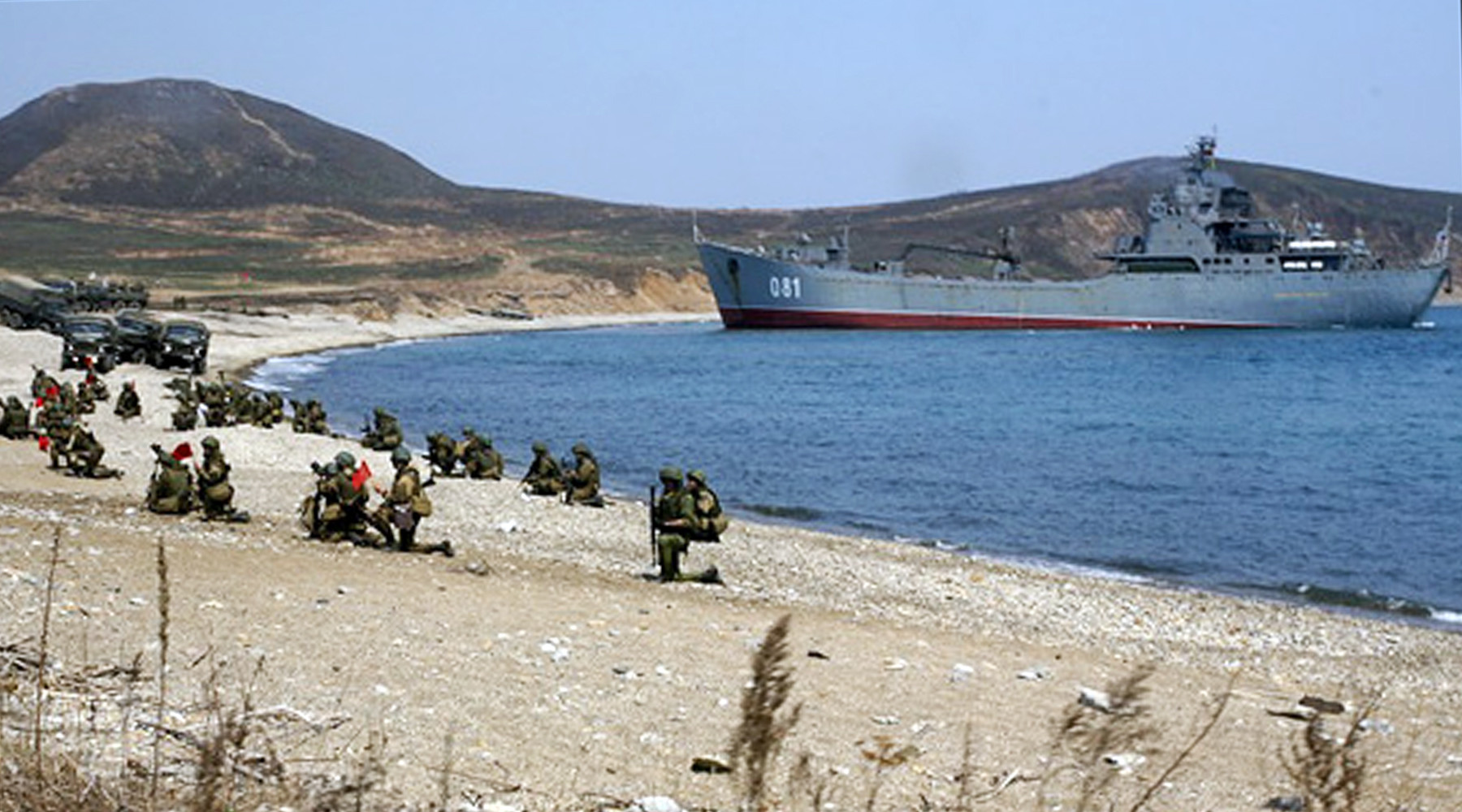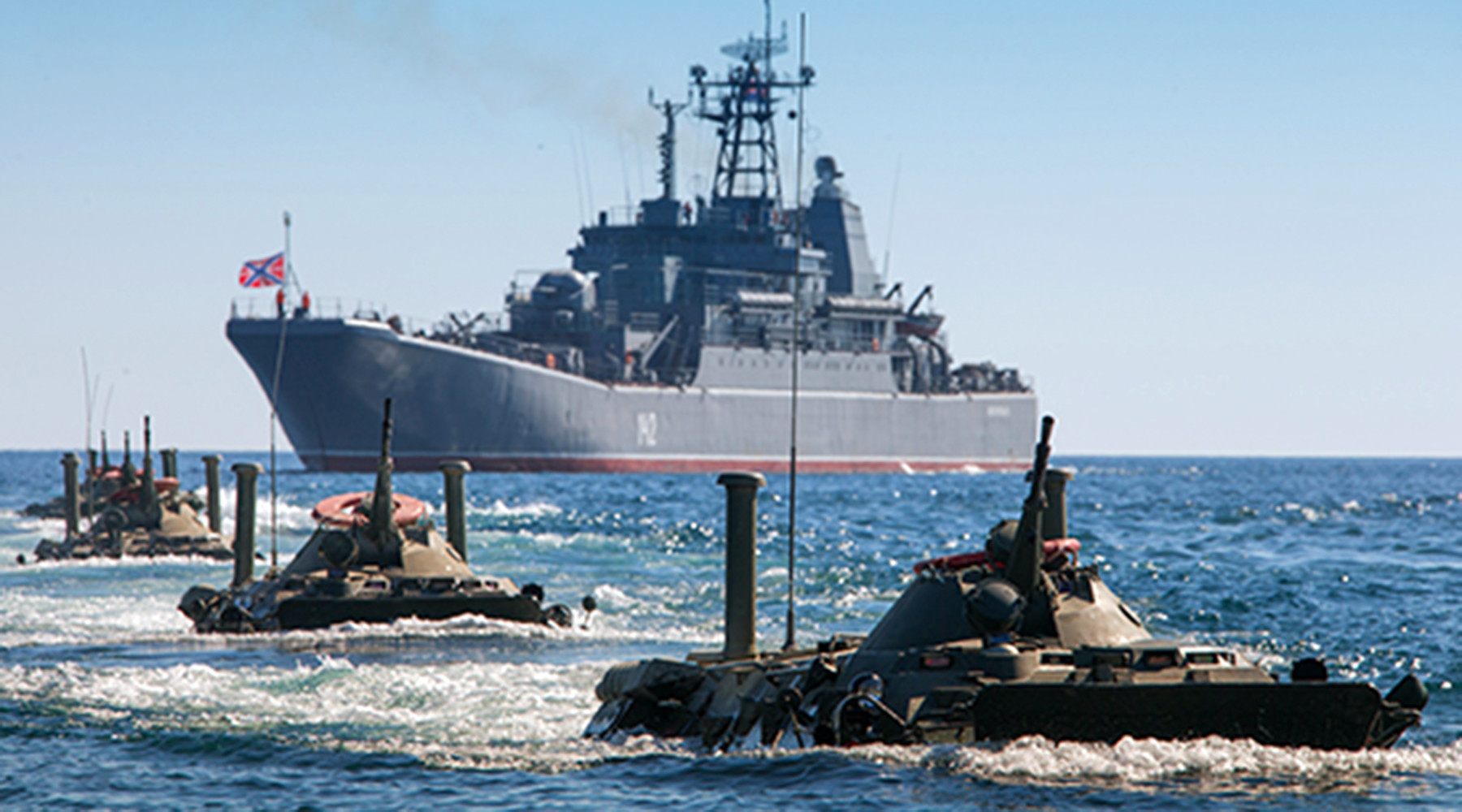In the Far East, units of separate brigades of marines (MP) of the Pacific Fleet began to pass a comprehensive exam for the title of "shock". Events involving more than a thousand soldiers are held at the Bamburovo (Primorsky Krai) and Radygino (Kamchatka) test sites, the press service of the Eastern Military District (VVO) reports.
The Commission, led by Pacific Fleet Deputy Commander for Coastal and Land Forces, Major-General Dmitry Kovalenko, evaluates the skills of Black Berets in such aspects as driving equipment, as well as fire, tactical, physical and special training.
Return of tradition
Lieutenant-General Ivan Buvaltsev, head of the Main Directorate of Combat Training of the Armed Forces of the Russian Federation, announced the restoration of the title of "shock" in May 2017. This honorary title is assigned to units by a special order of the Minister of Defense, based on the results of an inspection of combat training in the summer and winter periods.
Titles can be honored with the formation of the Marine Corps, Airborne Forces, Navy, Motorized Rifle and Tank Forces. The heraldic badge (pennant) that receives the shock division of the Armed Forces of the Russian Federation, as a rule, is kept near the Battle Flag, and the servicemen wear a special breastplate of golden color on the right side of the chest.
By June 2017, 78 army units claimed the title of percussion. The Ministry of Defense does not specify how much the number eventually received the honorary name, but it is known that the pennants were handed to 20 units of the Airborne Forces and several units of the Ground Forces and Navy, including marines.
In 2017, the airborne assault battalion of the 336th Guards Brigade of the MP and two units of the 11th Army Corps of the Navy began to strike. In March 2018, two formations of the "black berets" of the Pacific Fleet were honored with the honorary title.
In a conversation with RT, retired colonel Mikhail Timoshenko noted that the tradition of assigning the status of "shock" to subunits arose during the Great Patriotic War. The introduction of this rank was intended to support the morale of the Red Army soldiers, to instill in them the confidence in the inevitable defeat of the invaders.
“Shock units tried to complete with fresh reserves. In this case, most often they were sent to the fired and well-trained personnel. Also, if resources allowed, these units were equipped with heavy military equipment. Their task was to break through the enemy’s defenses and capture bridgeheads, ”said Tymoshenko.

- The landing of soldiers from a large landing ship
- © Ministry of Defense of the Russian Federation
According to him, the return of the name "shock" does not mean that its carriers will certainly participate in offensive operations. We are talking about the high assessment of the level of training and combat training of units, as well as maintaining the morale of servicemen.
“In general, this is a very conventional name. It does not make any part or division of the elite and does not characterize the tasks assigned to the owner of the pennant. That is, it is not necessary that the recipient of this title specializes exclusively in offensive actions. But it is appropriate to talk about the desire of the Ministry of Defense to develop healthy competition in peacetime, ”explained Tymoshenko.
"A lot of glorious victories"
As stated by Tymoshenko, in relation to the marines, all units of this kind of coastal troops can be counted in the shock. According to him, the “black berets” are assigned extremely difficult tasks, which a priori implies the highest level of combat training.
As noted in the materials of the Ministry of Defense of the Russian Federation, "the marines wrote many glorious victories in the combat chronicle of the Russian army." During the period of the Great Patriotic War, the “black berets” showed extraordinary courage and heroism. Their most famous feat is the successful landing on Malaya Zemlya - a place near Novorossiysk.
The main tasks of the modern marines have not changed. The Black Berets specialize in seizing bridgeheads on the coast, as well as enemy naval bases. In addition, the skills of military personnel are used to protect the most important objects of the Navy (headquarters and bases).
Part of the Ground Forces is always involved in conducting a large landing operation. In such cases, the marines are first to land, ensuring the safe approach of the main forces. At the same time, the actions of the MP servicemen are supported by the fire of ships and aircraft.
It is customary to distinguish two types of disembarkation in the fleet: “afloat” and “to stop”. The first method involves landing from ships on military vehicles (armored personnel carriers or infantry fighting vehicles) or on special high-speed boats that can deliver equipment and personnel.
The Black Berets are armed with small landing craft of Project 12322 Zubr, boats of Project 21820 Dugong and Project 11770 Serna. Landing can also occur from transport and multi-purpose helicopters that take off from the deck of ships.
Landing "emphasis" is carried out on a relatively safe area. Equipment and personnel get on the bridgehead after a large landing ship (BDK) came close to the shore and lowered the ramp at the water cut. For these purposes, the “black berets” use vessels of the project 775 and project 1171.

- “Over-the-horizon landing” of the MP equipment
- © Ministry of Defense of the Russian Federation
In June, the composition of the Navy was added to the BDK project 11711 "Ivan Gren" with a displacement of 5 thousand tons. In the first half of 2019, tests of the second newest ship, Peter Morgunov, will begin (currently being completed at the Yantar plant in Kaliningrad).
The main feature of the project 11711 is that the BDK can take on a battalion of marines (about 400 people), 13 tanks or more than 30 armored personnel carriers and infantry fighting vehicles. The ship is armed with a Grad-M rocket launcher, two AK-630 six-barrel automatic cannons, and ZIF-31B artillery mounts and AK-630M-2 Duet artillery.
Increased shock capabilities
In recent years, the Ministry of Defense of the Russian Federation is seeking to increase the capabilities of the marines: in early 2018, the military department decided to return tanks to its structure. Units bearing a combat watch in the northern latitudes will receive gas turbine T-80BV (easy to start up in the cold), and Southerners - diesel T-72B3.
As suggested by Tymoshenko, the "black berets" really lack a tank. According to him, even the most modern domestic armored vehicles do not reach the firepower of tracked tanks equipped with 125-mm cannons. The tanks will allow the Black Berets to develop the offensive, expand the bridgehead and ensure the retention of already occupied positions.
“The Marines, in essence, are the shock force. Of course, the appearance of tanks will somewhat facilitate the implementation of offensive actions. However, for the development of the marines it is necessary to build new BDKs and to improve the equipment in service. All this does not mean that Russia is going to seize someone - an increase in the shock capabilities of the “black berets” meets the current paradigm of the development of the Armed Forces, aimed at deterring the West, ”stressed Tymoshenko.
